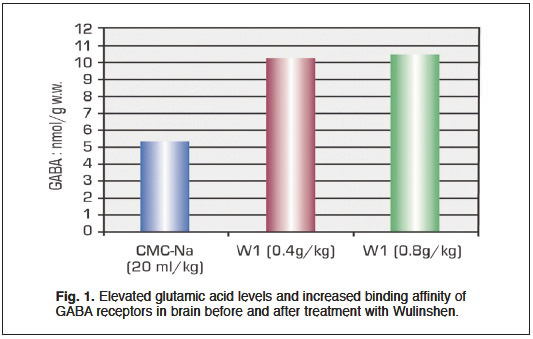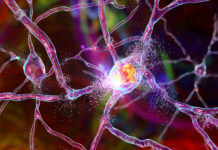 By Patton L. Whittington
By Patton L. Whittington
Not since the poet Epimenides stumbled into a cool, dark cave and fell asleep for 57 years, has sleep been such a precious commodity. Sleep experts nationwide report a sharp increase in bleary-eyed people seeking medical attention for poor sleep. “Something’s happening out there,” says Bethesda, Maryland pediatrician and National Sleep Foundation board member, Woodie Kessel, in a recent USA Today interview. “People are losing sleep, and that’s something that you cannot compromise on – it has consequences.” Kessel reports that the number of people reporting poor sleep has almost doubled since 2001. Sleep disorders are estimated to cost Americans over $100 billion annually in lost productivity, medical expenses, sick leave, and property and environmental damage.
Even more alarming, drowsiness in sleep-deprived drivers is likely the cause of more than 100,000 crashes, 71,000 injuries and 1,500 deaths each year. (1) For older Americans, loss of sleep can be an especially taxing problem. With age, we have a harder time falling asleep and more trouble staying asleep than when we were younger. This is because our sleep patterns, or “sleep architecture,” as specialists call it, begin to change. When we sleep, we cycle through multiple stages during the night, including periods of active dreaming called REM sleep (Rapid Eye Movement), and dreamless periods of light and deep sleep, or non-REM sleep. On average, this cycle repeats itself about every 90 minutes.
Older people spend more time in lighter stages of sleep than in deep sleep. Studies on the sleep habits of older Americans reveal that it takes longer for them to fall asleep, a condition known as sleep latency. Older people also experience an overall decline in REM sleep, and an increase in sleep fragmentation, or waking up during the night. According to data from IMS Health, a health care company, 56,287,000 prescriptions were dispensed last year for sleep medications like Ambien® and Lunesta®, a seven percent rise since 2007. While pharmaceutical companies have fielded a wide range of drugs designed to relieve the symptoms of insomnia, there is one clinically researched, natural sleep aid that has captured the attention of doctors and sleep-deprived patients, alike.
Unique Botanical Discovery
Wulinshen, or Xylaria Nigripes, is a fungus that can only be found in the one of the most inhospitable places on earth. All one has to do is dig deep, several feet underground, inside a nest of the voracious Odontotermes formosanus termite to find a compact cinnamon-brown, filamentous mass of Wulinshen. Wulinshen serves as a primary source of food for these hungry termites, and as a nutritional storehouse it is well suited to this purpose. In addition to being rich in carbohydrates and protein, Wulinshen boasts an impressive slate of essential amino acids, vitamins, minerals, trace elements, and glycoproteins. But Wulinshen is far more than simply “good eats” for wood-hungry termites.
Broad Range of Health Benefits
Human clinical studies have demonstrated that Wulinshen aids in regulating, supporting and promoting healthy human endocrine, immune, digestive, and metabolic functions. Researchers have been most enthused with Wulinshen’s potential to aid in normalizing sleep, menstrual health, prostate function, mental sharpness, and cognitive function. Research has shown that Wulinshen supports several conditions, including:
- Overall wellness and well-being
- Anemia
- Cognitive function
- Menstrual function
- Mood
- Prostate function
- Improved sleep
As one might imagine, wild Xylaria Nigripes is very rare, difficult to find, and therefore extremely expensive. Fortunately, researchers utilizing state-of-the-art pharmaceutical technology have been able to develop a patented fermentation process that allows for the production of a pure proprietary Wulinshen extract that is much more affordable.
Deep-Sleep Nutrients
Wulinshen contains a unique combination of ‘deep-sleep’ nutrients that research has shown capable of helping to ‘relax the brain’ and promote a sense of calm. As a result, Wulinshen is capable of safely restoring restful, recuperative sleep without the addictive or cloudy-headed effects often associated with prescription sleep remedies. Wulinshen contains glutamic acid, gamma-aminobutyric acid (GABA) and glutamate decarboxylase, all of which are known to assist in the uptake of GABA by specific brain cell receptors that exert a mild tranquilizing effect on the central nervous system. In pharmacological studies, elevated levels of glutamic acid and gammaaminobutyric acid (GABA) have been shown to upregulate the binding affinity of GABA receptors in the brain in subjects in treatment groups (Fig. 1). Furthermore, the activity of glutamate decarboxylase (GAD) was also increased in these subjects, indicating that Wulinshen possesses the ability to enhance the entry of glutamic acid and GABA into the brain to activate GABA receptors, resulting in significant sedative, sleep-promoting and mood-elevating effects.

Peaceful Sleep
In addition to promoting a safe, mild sedative-like effect, Wulinshen has been shown to reduce the time needed to fall to sleep while prolonging the duration of sleep time. This effect was shown to be both mild and accumulative, and most evident following 7 to 8 days of use.
Boosting Learning Ability and Memory
In addition to an abundance of amino acids, vitamins, and various other nutrient substances, the rich glutamic acid content in Wulinshen aids in promoting metabolism, protein synthesis and transmission of stimulative signals in nerve synapses. This “heightened sense of synaptic awareness” is closely related to the phenomena of long-time synaptic potentialization (LTP) observed during learning. In addition to improving learning ability and memory, research with Wulinshen suggests that the compound also increases the permeability and intake of glutamic acid and GABA into brain tissue to support improved regulation of the central nervous system.
Phase II Clinical Study
In a Phase II clinical study carried out from November, 1997 through February, 1998 at a number of Chinese hospitals, researchers selected 467 individuals to be randomly assigned to one of three study groups. The study results demonstrated that participants in the Wulinshen-treated group experienced significantly better quality sleep than the participants in the control group. Additionally, treated subjects showed improvements in a number of sleep-related conditions, including insomnia, dementia, anxiety and chronic fatigue syndrome.
Long-Term Sleep Improvements
In addition to the improvements in sleep quality reported by the Wulinshen-treated participants, the Phase II Clinical study revealed that Wulinshen’s sleep-promoting effects may persist for two weeks, or longer, following supplementation. At the end of the study the researchers concluded that Wulinshen was effective for reducing the severity of insomnia among the participants and that Wulinshen was an effective sleep treatment for users of all ages and duration of insomnia.
Phase III Clinical Study
A Phase III clinical study of Wulinshen was conducted at 11 participating hospitals across China from October, 1998, through February, 1999. Since the Phase II studies had already shown that Wulinshen exerted statistically significant improvements in sleep, the purpose of the Phase III study was to further verify the general benefits of Wulinshen. Results from the Phase III clinical study mirrored the previous study, with 90 percent of the participants reporting sleep quality that was either improved, much more improved, or completely symptom-free. As in the Phase II trial, this study also documented Wulinshen’s extended, post-supplementation, sleep-promoting effect.
Summary
Wulinshen is a mild-acting botanical with a gentle, accumulative effect. Over time, it can effectively correct underlying imbalances in brain chemistry and endocrine function that can negatively affect sleep patterns and disrupt normal, healthy sleep. Unlike prescription remedies that exert a ‘sledge-hammer’ effect on mind and body, Wulinshen works by gradually and steadily restoring an optimal state of balance to promote restoration of deep, restorative, recuperative sleep cycles. No drowsiness, foggy feeling or memory impairment has been reported or observed with Wulinshen.
Wulinshen is found in SleepCycle®, an advanced, all-natural supplement developed via a comprehensive, research-based approach to healthy sleep. Though people frequently tend to focus on falling asleep quickly, SleepCycle formulators embraced a far better indicator of sleep quality – the joy of waking up, every morning, feeling refreshed, energized and restored. SleepCycle is not intended to act like a fast-acting sleeping pill that knocks people out quickly. Instead, SleepCycle works with your body to gently promote a state of calm as it initiates the natural process of falling asleep. Over time, SleepCycle conditions and improves the overall quality of sleep by gradually extending the duration of deep, Slow Wave Sleep (SWS) and shortening the length of time it takes to fall into a restful slumber.
SleepCycle contains melatonin and 5-HTP, two tested nutrients that help resynchronize the body’s biological clock and promote healthier sleep rhythms. In addition to Wulinshen, SleepCycle also contains an impressive mix of natural plant extracts that have been used for centuries to promote deep, restful sleep, including Hops, Lemon balm, Passionflower, Valerian root, Angelica, Jujube, and Polygala. SleepCycle also contains L-Theanine, an amino acid derived from green tea and prized for its ability to relax the mind and promote calm.
References
1. Stoller, MK. Economic effects of insomnia. Clin Ther. 1994;16:873-97. Development Program. State-of-the-Science Conference. 2. Knipling R, Wang J. Revised estimates of the U.S. drowsy driver crash problem size based on general estimates system case reviews. Thirty-Ninth Annual Proceedings of the Association for the Advancement of Automotive Medicine. Des Plaines, IL: Association for the Advancement of Automotive Medicine; 1995:415-466.














